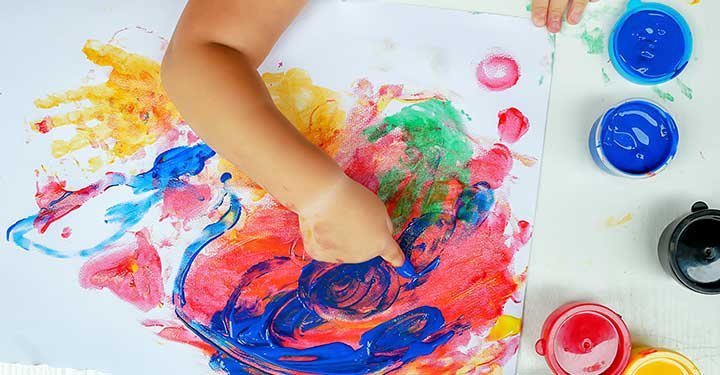The first five years of a child’s life are the most crucial phase for his or her development. This is the time when a child grows physically as well as psychologically. The reason for this is that physical development influences children’s behavior both directly and indirectly. The physical growth of a child takes place with the development of different muscles.
During the first 4-5 years, the child gains control over gross movements. These movements involve the large areas of the body used in walking, running, jumping, swimming, and so on. Different play activities help in a child’s gross development. In this period of growth major development takes place in control of finer coordination, which involves the smaller muscle groups used in grasping, throwing, and catching balls, writing, and using tools.
Motor skill, also referred to as dexterity, is essential for every child growing up. Fine motor skills help a child learn things quickly and easily. However, the development of motor skills is not the same for each kid. Kids with less developed motor skills tend to struggle with movement and coordination. Lack of fine motor skills can affect the child’s ability to write, organize, tying up shoelaces, or ever sometimes walking straight might be a struggle.
It’s important to understand fine motor development plays a huge role in a child’s daily life as they grow and go to school. Fine motor development helps with healthy cognitive processing at an early age.
Having the strength to press, push, pull, or squeeze helps kids learn to dress themselves, tie their own shoes, how to eat without assistance, play outdoors safely, how to hold a pencil to write, or even doodling with a crayon.
It’s been reported by education research and teachers that students are entering schools more and more not capable of doing these simple tasks. Lacking these basic skills slow down student progression in the classrooms.
There’s been a number of reasons reported why this might be happening, like students spending more time indoors on tablet screens, infants starting out lying on their backs more, rather than on their tummies, or parents simply doing more for their toddlers because they worry about safety or messes occurring.
The good news is that with time and maturity most children overcome these problems. But many require help and extra attention to get over their struggles. According to experts, activities involving art and craft can help a child develop fine motor muscles. This benefit of art and craft cannot be overstated as it helps children develop their motor skills.
Painting, coloring, drawing, and cutting are just a few arts and craft activities that require children to use both of their hands in sync When children use their fingers to manipulate art materials, they are developing their fine motor skills as they use those small muscles in their hands. Their bilateral coordination skills improve as they learn to use both hands at the same time. This is important because good bilateral coordination is required to perform such activities as typing, playing instruments, or sports.
Benefits of art and craft activities:
- Development of fine motor skills
Since most arts and crafts activities consist of moving fingers and hands, they help in developing fine motor skills. Simple actions like holding a paintbrush and coloring with pencils help strengthen muscles and improve their control. All this happens when they paint, color, glue, and cut. The quicker their fine motor skills develop the more they can do on their own, from eating by themselves to tying their own shoelaces.
- Enhances dexterity
Arts and crafts activities can enhance the children’s dexterity and agility. With the enhancement of fine motor skills and much practice, a child’s manual dexterity, artistic skills, and speed will also increase.
- Improvement of hand-eye coordination
Engaging in activities related to arts and crafts from a very young age leads to a tremendous improvement in hand-eye coordination. This brings the development of eye muscles. This will help a child during later school years when she or he is spacing out words or forming letters.
- Improvement of vocal muscles
Saying or repeating the names of the different art materials and different processes involved, develop their communication skills, and this often means exercising their vocal cords which leads to vocal cord muscle development.
- Encourages Neural Muscles Development
Because art employs any or all of the senses, such as sight, sound, taste, and smell, the synapses in the brain of a small child fire away as they experience situations that immerse their senses and further encourage their creativity. In fact, a young brain makes billions of new connections with every bit of new knowledge it is exposed to leads to brain muscle development.
In young children, artistic activities lead to the formation of well-rounded personalities, good attachment, self-esteem, and better mental health.
Creative activities help to spark children’s natural curiosity and create their own journey of exploration, discovery, and development. What’s more, it’s great fun!


